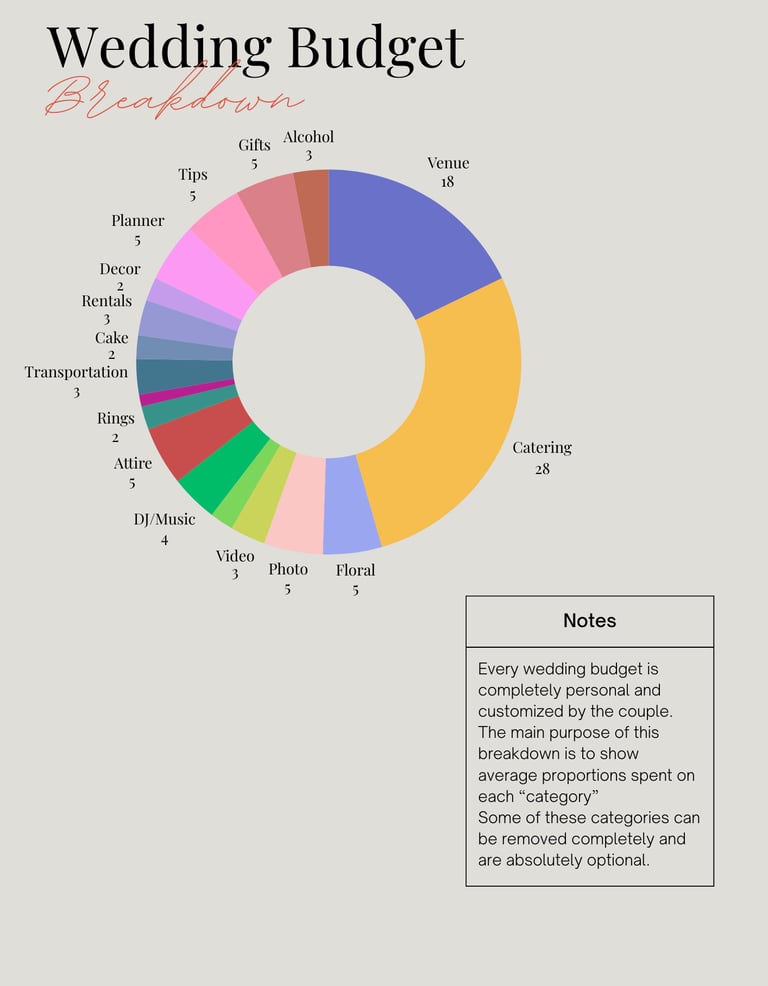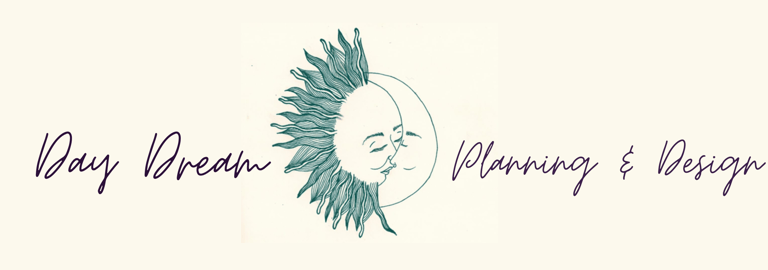Personalized and creative Wedding Planning and Design in NJ, NY, eastern PA
Wedding Budget Breakdown
Dive deep into each and every aspect of wedding budget with provided industry "averages" and tips how to cut costs efficiently.
2/2/20253 min read
Planning your wedding day can be the most exciting time of your life, but also can become overwhelming and time from time very stressful. Probably, the main concern and cause of anxiety during wedding planning is budget planning and trying to fit in the certain numbers and suggested industry "standards"! From the venue to the dress, the flowers to the catering, the costs can quickly add up. Lots of times I have heard from my couples, how they spent almost all of their budget on the venue or their first vendor and then struggled to fit all the rest important parts into the leftover limited amount.
However, with careful planning and a clear budget vision, you can create the wedding of your dreams without overspending. That is why I created this post and a tool to help you breakdown your budget into different categories and make sure you allocate enough of your savings into each aspect of this day, depending on your PERSONAL priorities. Read this post until the end to be able to get a complimentary editable wedding budget spreadsheet that will help you to keep track of your spendings, see your overall progress and make sure you are not going over your projected amounts in each category.
Venue and Catering: The Biggest Expenses
The venue and catering are typically the largest expenses in your wedding budget, often accounting for 45-50% of your total spending. This includes alcohol, which can significantly impact costs. Depending on your choices, these expenses may come as a combined invoice (if you opt for an all-inclusive venue) or as separate bills (if you hire different vendors).
Venue Costs: Some venues include rental items like tables, chairs, and tableware, which can simplify your planning. If you’re getting married in a non-traditional space (e.g., a backyard or family home), keep in mind that you’ll need to budget for rentals and setup to transform the location into a wedding-ready venue. Even in cases when venue fee itself could be close to zero, these expenses often end up around the 50% mark of your total budget.
Essential Vendors: Music, Photography, Planning, and Florals
After securing your venue and catering, the next major expenses are your essential vendors. These typically include:
Music (DJ or band)
Photography and videography
Wedding planner
Florist or decorator
Each of these vendors usually makes up about 5% of your total budget, totaling around 25% combined.
Tips for Saving on Essential Vendors
Florals: With the rising cost of flowers, many couples are exploring alternatives like faux florals, rentals, or DIY arrangements. These options can be just as beautiful if planned and executed well (make sure you have a designated person for the set-up).
Videography: Consider hiring a content creator instead of a traditional videographer. They are often more affordable and deliver footage faster, while professional wedding videos can take months to edit.
Music: DJs are generally more budget-friendly than live bands. While a band can cost 5,000-7,000 or more,a DJ typically ranges from 2,800–3,000.
Additional Expenses: The Remaining 15%
After accounting for the venue, catering, and essential vendors, you’ll have about 15% of your budget left for other important but less expensive items. These may include:
Wedding attire (dress, suit, accessories)
Beauty team (hair and makeup)
Wedding rings
Ceremony and officiant fees (if separate from the venue)
Decor and stationary
Wedding cake
Transportation
Accommodation
Gifts or favors
Gratuities
Cost-Saving Tips for Additional Expenses:
Stationary: Design your own invitations using tools like Canva, or opt for digital invites and RSVPs. Print signage and menus at affordable stores like FedEx, UPS, or Staples.
Wedding Attire: Check out sample sales, explore smaller designers, or consider renting your dream gown. You can also have a tailor recreate a designer dress at a fraction of the cost.
Officiant: Ask a friend or family member to officiate—they can get certified online for free!
Desserts: Instead of a large wedding cake (which often goes to waste), opt for a small cake for photos and serve bite-sized desserts to guests.
Favors: Skip traditional favors altogether, or use seating charts or centerpieces that double as guest gifts. Most guests won’t mind if favors are omitted.
The Value of Hiring a Wedding Planner
Hiring a wedding planner early in the process can be one of the best investments you make. A planner can:
Customize your budget based on your priorities and needs.
Help you stay on track with spending.
Suggest creative ways to cut costs without compromising quality.
In many cases, a planner’s expertise can save you more money than their fee, making them a worthwhile addition to your team.
Planning a wedding budget doesn’t have to be stressful. By prioritizing your spending, exploring cost-saving alternatives, and staying organized, you can create a memorable day without breaking the bank. Remember, the goal is to celebrate your love, not to overspend on unnecessary details.
If you found this guide helpful, don’t forget to check out the Wedding Budget Spreadsheet below to kickstart your planning journey!




Day Dream Planning
Crafting unique weddings for each special love story
Connect
hello@daydream-planning.com
© 2024. All rights reserved.
